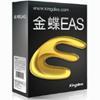Week 3:
Selling EA
This week you should focus on the need for
an EA. How can you convince management to support an EA initiative? Find
some examples online and share your thoughts.
Write about other EA activities you engaged
in the week.
Selling EA to people in need
Who
need EA and what do they need EA to do?
Since we want to convince the management,
we should ask ourselves to find out a clear idea of companies and EA.
A) Who should be the right
person you are going to sell EA?
Definitely, it is not the grass-root staff
and managers, but the CEO and senior managers.
B) What do the managers and
CEO want to do?
They want to improve labor efficiency of
the company to help them earn more money. In all the aspects influencing labor
efficiency, the increasing information matters a lot. Solving the information problems
can help the company.
C) What are the problems in
their companies on information?
The increasing information means more
chance in business, and in the meantime means risk to companies. Although the
problems may happen in different departments, the results of them are
same----it is hard to communicate with each other or even in the department
itself. When the CEO needs to get the statistics, they should wait for quite a
long time. Without valuable and timely information, the efficiency of
information transmission is limited. How to use enterprise information
efficiently and establish its own competitive advantage is a big challenge for
every company.
D) How can EA help in solving
such problems?
Generally, EA is a method to analyze what
the differences between the current company and the expected company, and help
to find the way to get through the gap.
In addition, EA can help to make the
business respond quickly to the changing market.
EA can manage the business process
efficiently, and ensure the strategy implement.
EA can make sure that the information
consistence across departments.
EA can map the IT blueprint and cut cost in
the future IT integration.
E) Are there some successful
cases in using EA?
Absolutely.
There were some problems in its
architecture:
(1)
Although the corporation
started the informatization ten years ago, the software systems were separated
in different departments at that time. They cannot be integrated to proceed
systematic managing and controlling, especially cannot offer valuable
information to the supreme leaders.
(2)
The data in the central data
base were not used efficiently.
(3)
The most prominent issue is,
the corporation did not make an overall plan for informationize, thus, information-isolated
islands existed. For example, the financial data in general ledger system,
financial center system, and cost system were not integrated.
These problems seriously restricted the
information system efficiency.
The decision makers wanted to build up a
system that can offer business data at any time to assist the decision-making.
The system should be able to offer real
time information of enterprise cash condition, sales, production cost, and schedule,
etc.
 …
…
The software company, Kingdee, was hired to
design a system to Vanke.
Kindee offered Vanke its EAS (Enterprise
Application Suites). It was the first enterprise management software that fused
TOGAF-standards SOA frame. In the following part, I will list the examples in
policy management and financial management.
In Policy
Management, the system offered the company unified basic material, unified financial
policy, and unified configuration management. In addition, it offered a basic data
management pattern including both sharing and isolated. These policies helped
the whole Vanke Corporation worked well in using Kindee EAS systems.
In Financial
Management, Kindee built up a financial information management platform
which can run in the whole Vanke. It was unified, integrated, flexible,
efficient and analyzable, and fulfilled the requirement of Vanke in multi-industry,
multi-region, multi-institutional, and multi-task. It realized the branches’
financial accounting centralized.
The Kindee EAS also improved the systems in
fund management, business management, etc.
After using the new systems, the chief
manager of Vanke cost management department said the following words. By using
Kindee EAS, the cost management can be controlled down to even a wire, and the
EAS system of Vankee was taking the lead in the peers. The Kindee EAS realized
the integration of finance, cost, funds, and business processes.
This is a successful case of EA used in
company, containing the situation before and after EA was adopted.
















